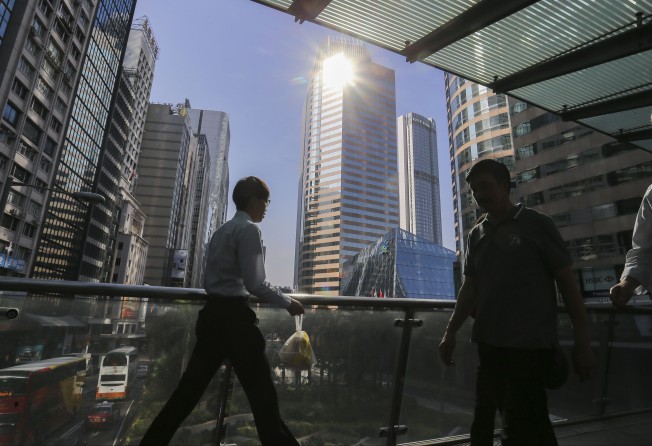Hong Kong’s Securities and Futures Commission to consider active exchange-traded funds
Unlike passive ETFs, active funds allow managers to control underlying portfolio allocations for extra returns

The Securities and Futures Commission is considering a consultation on allowing active exchange-traded funds (ETFs) to be listed on the Hong Kong stock exchange, when it reviews the Code on Unit Trusts and Mutual Funds towards the end of the year, sources said.
Unlike passive ETFs, active ETFs allow asset managers to make decisions on the underlying portfolio allocation for extra returns. This combines portfolio management with the benefits of a low-cost and highly transparent exchange-traded structure.
Hong Kong has as many as 109 listed ETFs but the variety is still quite limited, with most being passive ETFs that track the same, few well recognised indexes such as the Hang Seng Index or the Hang Seng China Enterprises Index.
The commission has been in discussions to gauge interest levels and consider the regulations that might be needed.
With ETFs continuing to grab market share from mutual funds, active asset managers might be forced to re-evaluate their product strategies and review actively managed, smart beta or factor ETFs as their entry point into this high-growth segment. US management company Pimco and US financial services company State Street have already rolled out popular active ETFs.
“Active asset managers are increasing their comfort level with the ‘ETF wrapper’. They are finding ways to stay true to their active investment philosophy, but leverage the ETF wrapper to access a new distribution channel,” said Chris Pigott, the head of Hong Kong ETF services at US investor services firm Brown Brothers Harriman.
Globally, active ETFs have grown rapidly to US$61 billion in August 2017 compared with US$38.2 billion in June 2016, according to data from research and consultancy firm ETFGI. In the US, active ETF assets have grown from US$22 billion at the end of 2015 to US$40 billion at the end of August. In terms of product, 76 per cent of the active ETF assets in the US are invested in fixed-income strategies. In Asia-Pacific, South Korea also began to allow active ETFs this year with six fixed-income products listed in June, joining Australia in the transformation of the ETF industry.
Investors have pulled US$1.9 billion from stock ETFs in Hong Kong this year, according to data by Bloomberg, reflecting a lagging demand for Hong Kong ETFs amid an unfavourable regulatory environment, limited variety of ETFs available and relatively lower product understanding.
So it is not surprising that commission wants to step up efforts to encourage wider participation by permitting actively managed ETFs and increasing product choices.
CSOP Asset Management, China AMC, Samsung Asset Management and Mirae Asset Management were the first four companies to obtain approvals for the launch of “leveraged and inverse ETFs” in March. In October, local start-up Premia Partners issued its first “smart beta” ETF for mainland shares.
Some industry participants, however, might raise concerns about transparency requirements and their own need to protect the intellectual property of their investment strategies.
The dealers need to understand what the investment basket comprises to effectively trade the ETFs at attractive bid-ask price spreads. However, issuers might not want to disclose the active portfolio on a daily basis to the public.